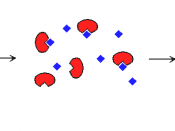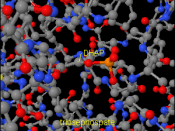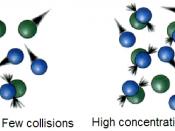Plan
Aim: The purpose of this experiment is to investigate what size of bead would produce a higher concentration of glucose, after the milk has been poured into the column containing the immobilised lactase enzymes. The experiment would also be done using two different types of milk (Semi-skimmed and Whole milk) in order to see the difference in the amount of lactose present in each.
Hypothesis
The smaller the size of the beads in the column, the higher the concentration of the glucose produced after the milk has been poured through the column into the beaker containing the lactose-free milk. However, I am not sure whether there will be a higher concentration of glucose with the Whole milk (WM) or Semi-Skimmed milk (SSM) as they just present how much fat is present in each. Then again, there could the concept of inhibitors, which I should discuss after the results have been collected.
Prediction
I think that the smaller the size of the bead, the higher the concentration of the glucose left after the milk has passed through the column. This is because the smaller sized beads would have a larger surface area than those with larger bead size. The volume of the substances used to make immobilised lactase enzymes is the same for all different sizes of beads, ensuring that it's a fair test. Therefore the larger surface area with the smaller sized beads implies that the lactose sugars in milk would have a greater chance of being split into glucose and galactose by the lactase enzymes. This is due to the greater chance of collision between the enzyme and substrate because there would be more exposed enzyme molecules with smaller sized beads than larger sized ones.
This theory is supported by the Collision Theory, which states that as...



Constructive criticism
A very thorough and intersting investigation, however writing style could be more formal
1 out of 1 people found this comment useful.